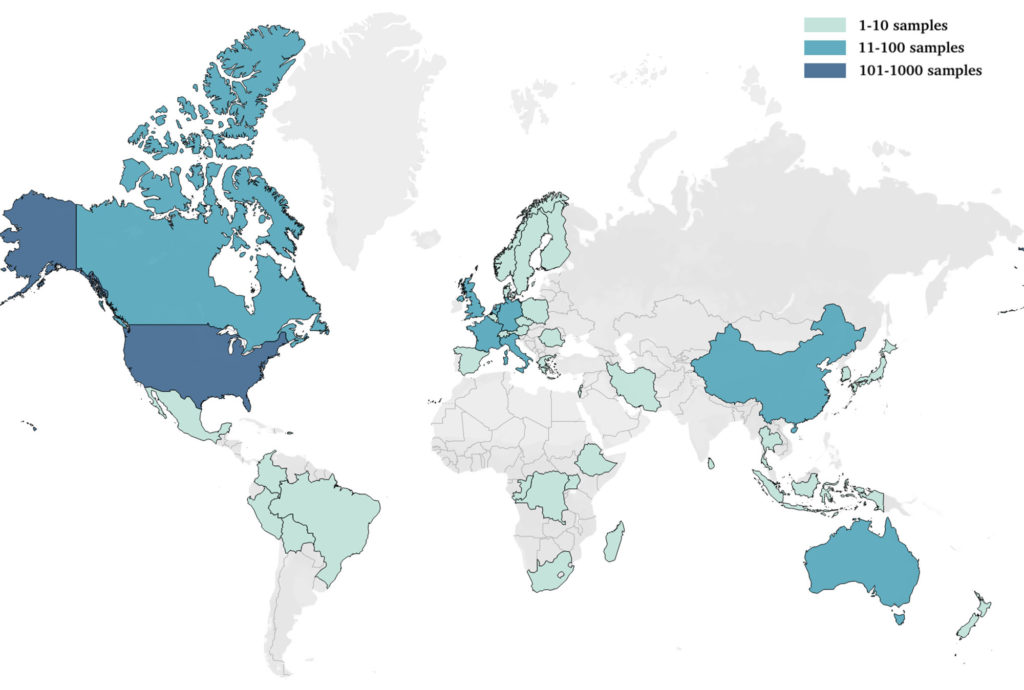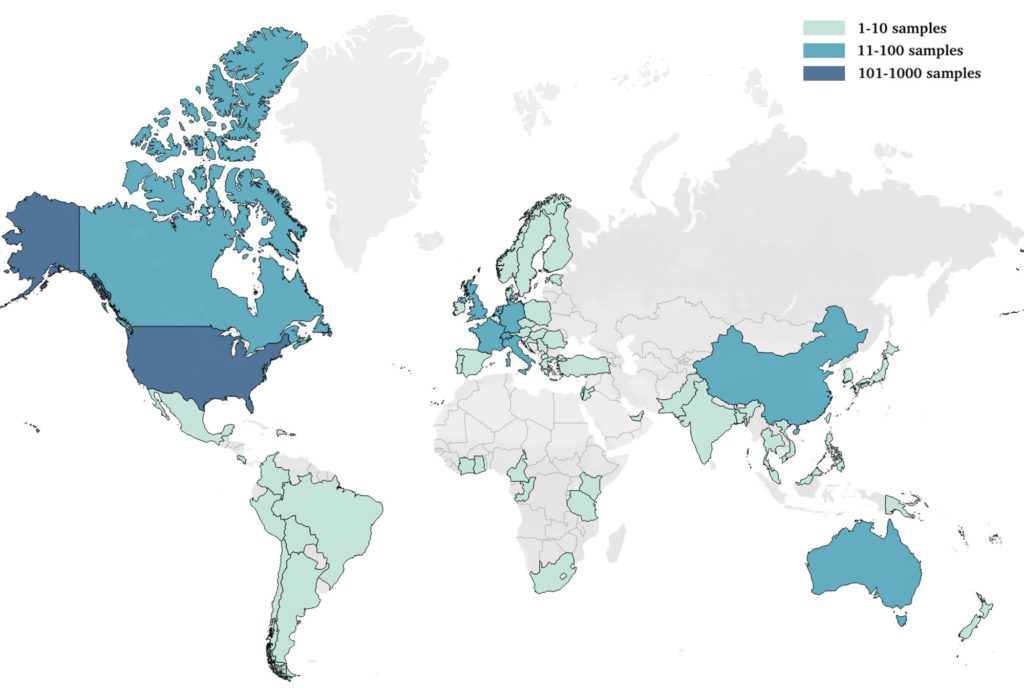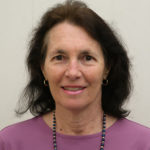Featured
Global Science Requires Greater Equity, Diversity, and Cultural Precision

More than 80% of the world’s population lives in countries other than the United States, Canada, and Europe, which dominate psychological science nonetheless. The Global Spotlight series is a small step toward closing that gap. Authors across the globe—including in regions that have long been underrepresented in the research community—share unique and personal perspectives on the issues affecting their work and careers. In providing these on-the-ground narratives, we hope to illuminate concrete challenges and opportunities alike involving this truly global science.
Has psychological science become more globally diverse? • Defining diversity: A call for greater differentiation • Obstacles, barriers, and bias in global research • The road ahead: Pathways to a global science • Conclusions
The need for psychological science to become a globally representative science has been widely acknowledged (e.g., Cheon et al., 2020; Draper et al., 2022; Henrich et al., 2010; Hofstra et al., 2020; IJzerman et al., 2021; Puthillam et al., 2023; Singh et al., 2023; Thalmayer et al., 2021). Central to this priority is the recognition that a global science is a generalizable science (e.g., Arnett, 2008; Graham, 1992; Henrich et al., 2010; Legare, 2017; Moriguchi, 2021; Nielsen et al., 2017). In this essay, we discuss the apparent discrepancy between espoused ideals for a global science and implicit biases that perpetuate unequal visibility and representation in psychological science. First, we present data on changes over time regarding global representation in psychological research. Second, we discuss specific approaches to diversification, focusing on the need for consideration of both within-country and between-country variability. Finally, we discuss structural barriers to global diversity and potential solutions for broadening representation in psychological science.
Has psychological science become more globally diverse?
Several studies have examined whether diversification has improved because of increased awareness of narrow sampling in psychology (e.g., Nielsen et al., 2017; Singh et al., 2023; Thalmayer et al., 2021). An analysis of author and participant representation in prominent psychology journals, first initiated by Arnett (2008) and followed up by Thalmayer et al. (2021), revealed only a modest increase in non-U.S. authors and samples over time. This increase was mostly due to an increase in authors and samples from other English-speaking countries. This pattern is emblematic of the very gradual shifts in different subdisciplines of psychology that continue to omit much of the world from the research record (Moriguchi, 2021; Nielsen et al., 2017; Singh et al., 2023). In the following, we provide an analysis of global diversification in one area of psychology—developmental science—that reflects our field of expertise.
We conducted an analysis of all empirical studies published in mainstream developmental science journals (Child Development, Developmental Psychology, Developmental Science, Infant and Child Development, Journal of Experimental Child Psychology) over a 10-year interval (2011 to 2021). We coded the data collection sites for 3 million participants, as visualized in Figures 1a and 1b. In both 2011 and 2021, there was a clear concentration of samples within the United States, followed by regions of Western Europe, Australia, and China. High areas of invisibility remained, notably in Africa, the Middle East, and Russia.


We also examined the country of affiliation of the same manuscripts’ lead authors to determine the scientific leadership of global research. These results show a very similar concentration in the widely represented regions of North America and Western Europe. Therefore, despite various efforts to promote global diversity in developmental research (e.g., Henrich et al., 2010; Legare, 2017; Moriguchi, 2021; Nielsen et al., 2017; Singh et al., 2023), there has been limited visible change in research participation or leadership. We suggest that the lack of evidence of greater diversification is not due to a lack of commitment or an information deficit, but instead to barriers in developing and/or implementing diversifying practices.
Defining diversity: A call for greater differentiation
We propose that a significant limitation to diversification has been how diversity is defined. The use of labels that bifurcate the world overlooks important aspects of within-group heterogeneity. For example, calls for diversity often include the terms WEIRD (Western, educated, industrial, rich, and democratic) and the Global North to describe samples in psychological research and world regions more generally. Although approaches using these labels have included calls for greater inclusion of non-WEIRD countries and/or the Global South, which have been significant omissions in psychological science, paradoxically these labels are themselves overgeneralizations that neglect consideration of within-country variation.
Implicit in the use of these labels is the notion that within-country diversity is exceeded by between-country diversity. However, this does not necessarily hold true. All countries are heterogeneous regarding multiple demographic factors including, but not limited to, wealth, education, race, socio-political context, and religion. Both countries typically characterized as WEIRD and non-WEIRD contain significant heterogeneity along multiple dimensions. For example, non-WEIRD countries are generally perceived to be uniformly lower in socioeconomic status, to represent smaller-scale societies, and to have lower levels of formal education within the population (Ghai, 2021). Conversely, WEIRD countries are presumed to be homogenous in wealth, education, and political orientation (as the acronym implies), yet there exists considerable variation within these countries.
Disregarding within-country demographic variation also impacts who we include in psychological research. By focusing on convenience samples or other widely studied groups as representative of a particular country, historically underrepresented groups remain absent from psychological science. Achieving a globally representative psychological science requires acknowledging within-country diversity and between-country diversity and including underrepresented groups in all countries (Killen et al., 2015). The use of labels impacts not only how nations are characterized, but also how we conduct research. For example, it is not uncommon for researchers to compare WEIRD and non-WEIRD samples in the service of a more global science. This approach carries the clear implication that presumed variation between WEIRD and non-WEIRD populations, without considering various types of demographic variation, is scientifically informative (Apicella et al., 2020; see also Ghai, 2021). Yet, both factors—lack of direct comparability and lack of attention to within-country heterogeneity—limit how findings are interpreted. Such comparisons can provide a misleading and restricted picture of cultural differences. Instead, we must study the range of demographic factors that reflect diversity within any sample and carefully document this information in reporting new findings and in generalizing from studies.
Read all of the articles from the September/October Observer.
In general, bisecting the entire world by any single metric, whether it be WEIRD/non-WEIRD or Global North/Global South, is potentially reductive. Others have made these arguments regarding individualistic and collectivistic cultures, with the conclusion that the diversity within each culture can be similar to or even greater than the diversity between cultures (Oyserman et al., 2002; Turiel et al., 2016). To accurately define sample diversity, researchers should identify participant samples by demographic information relevant to the context rather than by using “standardized” criteria, which too often reflects the views of high-status groups in the most visible countries already represented in psychological science. In addition, dimensions of diversity intersect because of the coexistence of multiple identities and experiences, a construct that is so often relevant to psychological processes (Crenshaw, 1989).
Obstacles, barriers, and bias in global research
The barriers to greater balance in psychological research are complex and multifaceted. Fundamentally, global variation in research capacity is a limiting factor for research output. Some countries that are well represented in psychological research commit a large proportion of their gross domestic product to research and development in the social sciences, which drives research activity. In addition to research capacity, however, additional barriers, obstacles, and biases limit participation in psychological research.
In fact, the kinds of questions that are valued in psychological research and the limited diversity of voices asking these questions also create an ideological barrier to global diversity (Syed et al., 2018). These barriers can be lifted by diversifying the range of voices that contribute to idea generation, as the predominant voices in the literature often reflect the priorities of high-status and well-resourced communities (Turiel et al., 2016). Even when diverse voices are solicited, implicit (and explicit) bias is evident. For example, investigators’ own diversity can influence the perceived value of research questions. Conceptually novel ideas produced by members of minoritized groups can be less valued than less novel ideas produced by members of majoritized groups, a finding known as the diversity-innovation paradox (Hofstra et al., 2020).
The value placed on research is also determined by gatekeepers, such as journal editors and conference committees, who make important decisions around inclusion and visibility. These individuals and entities remain concentrated in certain regions of the world. For example, editorial positions for top psychology journals are heavily concentrated in the United States (Palser et al., 2022). Although many journals cite internationalization as a key priority, the composition of editorial boards does not reflect this (Liu et al., 2023). Similarly, psychology conferences are often located in North America or Western Europe. This carries a broad range of implications for global participation, from limiting who sets the research agenda for professional meetings to creating barriers to entry arising from visa restrictions (Puthillam et al., 2023).
Multiple biases related to researcher identity limit broader engagement in research. Variation in English proficiency and usage can impact publication prospects, perpetuating a bias toward Anglophone countries. Researchers with limited English proficiency and those using variants of English that are underrepresented in the literature may receive suggestions during peer review for copyediting, which may be costly. Linguistic barriers notwithstanding, researchers who submit work from underrepresented settings often confront specific challenges in peer review. They are often more intensively queried on the relevance and significance of their work compared with researchers from widely represented settings (Draper et al., 2022). U.S.-based journals may minimize the impact of the work, as exemplified by suggestions to submit to “international” outlets (Draper et al., 2022). Alternatively, such researchers may be asked to frame their studies as cultural commentaries versus foundational knowledge (Singh et al., 2023), which has consequences for the perceived impact of research findings (Kahalon et al., 2021). Reviewers and editors often ask authors to place their work in the context of conceptual frameworks or research evidence from North American and Western European countries. As well, reviewers often request a “control” group from a widely represented setting, implying that sites such as the United States serve as a necessary reference category for research from underrepresented contexts. Further, reviewers may assume the “control” group referenced reflects wealthy, high-status, educated, and White populations, ignoring the heterogeneity within the widely represented countries. These kinds of reviewer microaggressions can unintentionally exclude authors from publication opportunities (National Academies of Sciences, Engineering, and Medicine, 2022) and are antithetical to the goals of greater global diversity in research.
The road ahead: Pathways to a global science
Although there is considerable agreement about the need to diversify and internationalize psychological science, there is less agreement about how to accomplish this. In part this is because the path forward involves coordinated action among multiple stakeholders, including funding bodies, higher education institutions and their administrators, professional organizations, journal editors (who may be appointed by and serve at the will of their professional organizations), and reviewers.
Despite the challenges of addressing variation in research capacity across countries, there are many impactful solutions that can be implemented by psychological science communities. A first step, which many organizations have already implemented, is to make internationalizing psychological science a strategic goal. This includes diversifying the science that is published in English-speaking psychology journals, studying underrepresented populations, and increasing the global representation among scientists and author teams. These are important but broad aims; here we offer a few more specific recommendations that may move us closer to achieving these goals.
Journal boards and editorships. As noted above, journal editors are gatekeepers. They select reviewers and then make the final decision about manuscripts, and thus their biases can make publication difficult for scientists from underrepresented regions of the world. As others have documented (Lin & Li, 2022), editors-in-chief (EICs)—and to a lesser extent, editorial boards—of the major U.S. psychological journals are not very diverse with respect to international representation. American stewardship of journals has perpetuated a “home country bias” (Lin & Li, 2022) in which submissions by North American scholars are better positioned for publication in these journals. Of course, the issues are considerably more complex than simply increasing the representation of EICs from non-Western countries, but doing so may have a significant downstream impact on the diversification and internationalization of editorial boards, reviewers, and authors (see Auelua-Toomey & Roberts, 2022).
To ensure that more diverse editorial boards and reviewers translate into the type of inclusive developmental science that we hope to achieve, professional organizations and editors can take an active role by providing explicit guidelines for sample descriptions. Several journals have adopted sociocultural policies that ask authors to document in detail their samples’ identities and to discuss constraints on generalizability (Garcia-Coll, 2015; Roisman, 2021). However, the guidance provided often reflects U.S.-based markers of identity and experience. One example is the recommendation to provide information about race and ethnicity as a marker of participants’ background characteristics. However, more relevant markers of community demographics may be immigrant status, tribal affiliation, religious affiliation, caste, or membership in an ethnolinguistic group (or combinations of these). We suggest that all descriptions of cultural and national settings should provide demographic information about the individuals sampled. Moreover, these details should be discussed relative to both the population to which the sample is expected to generalize and the research questions being queried.
Journal policies are necessary because of the high degree of underreporting of demographic data, which can perpetuate the notion that widely sampled populations represent a default standard. For example, an analysis of demographic reporting of the participants sampled in articles from premier developmental psychology journals revealed that most researchers do not provide demographic information such as participants’ race and ethnicity, country of origin (Singh et al., 2023), or socioeconomic status (Singh & Rajendra, 2023). Yet most studies in these analyses expressed findings in generalizable terms, a common tendency in psychological research (DeJesus et al., 2019). Journals are in a strong position to address this issue. Past analyses demonstrate that journal requirements are effective in increasing demographic reporting (Garcia-Coll, 2015; Roisman, 2021; Singh et al., 2023). Moreover, a unified framework for reporting who, exactly, we are testing in published research would facilitate consistent provision of demographic information (see Singh, Barokova et al., in press, for such a framework). Changing the expectations for demographic reporting increases the scientific accuracy of the information regarding the population studied as well as enabling the science reported to recognize and include within- and between-country heterogeneity.
Professional societies could usefully develop training modules and webinars for their EICs, editorial boards, and particularly reviewers that explicitly discuss these issues and other barriers to progress. Key to these initiatives is representation and the direct participation of researchers from underrepresented regions. Avoiding situations where U.S. scholars serve as spokespeople for underrepresented communities is a critical priority. Collaborative research needs to give voice to all partners in the research endeavor. This could also move us forward in overcoming some of the biases described above, in terms of understanding the values inherent in the contextual variability of research questions and methods. Furthermore, explicit training might be particularly useful to overcome the type of reviewer microaggressions discussed above.
Facilitating contact between EICs and authors. Learning how to successfully negotiate the publication process is daunting for most young scholars. This may be especially the case for international authors from underrepresented communities, who may be unfamiliar with different journals’ submission types and guidelines. Informational sessions held at international meetings with different journal EICs or associate editors can increase successful international submissions and may provide a point of contact for international authors to seek guidance on the suitability of potential submissions. In addition, psychological science organizations can offer webinars with EICs to help prospective authors learn more about the types of articles different journals seek and the steps they can take to improve the chances of a successful submission.
Language barriers. As noted above and by others (Ong & Ochoa, 2022), fluency in English is another major barrier to publishing in international journals, many of which are published in English. One solution is to provide better support for English language editing. Authors who are not fluent in English or who are not familiar with the conventions of scientific writing in U.S.-based psychology journals are often encouraged to hire English language editors. This can be costly and thus may further contribute to inequality. In addition to encouraging researchers’ home institutions to provide these services at minimal cost to authors, journals should be encouraged to offer or contract for these services at costs that are affordable for authors.
Moreover, it is typically taken for granted that English is the lingua franca, the common language that must be used to publish in the major psychological science journals. However, to make psychological science more diverse and representative, journals might more commonly include multilingual abstracts so that broad audiences have greater access to research conducted in and among different international communities.
Journal publishers are an underutilized resource in moving forward in these directions. The publishing industry has become increasingly consolidated, with only a few large companies publishing the majority of psychological science journals. Moreover, publishers have an enormous financial stake in international distribution of their products and have developed sophisticated marketing tools to distribute journals in underrepresented regions of the world. These resources might be better harnessed to disseminate information and resources to assist potential authors with submission and to better inform journal editors about where psychological science is thriving and the form that it takes in different settings.
Acknowledgments
The authors are grateful to Alexandra Paquette for data coding, Sarah Josephine Rajendra for assistance with data visualization, and Glenn Roisman for helpful discussions.
Address for correspondence
Correspondence concerning this article should be addressed to Leher Singh, National University of Singapore, 9 Arts Link, Singapore 117570.
Electronic mail may be sent to [email protected].
More inclusive professional meetings. Professional psychological science organizations can directly facilitate international scholarship by holding their conferences and smaller meetings outside of the United States and Western Europe. This has the potential to enhance global participation and reduce the barriers identified above (cost of travel, entry requirements such as visas). Although some psychological science organizations may not want or be able to hold their major conferences internationally on a regular basis, they may be able to hold occasional smaller meetings in different locations. For example, for several years, the International Society for the Study of Behavioural Development (ISSBD) has successfully sponsored small satellite meetings in different parts of the world; these have provided opportunities for scientific exchanges between researchers from diverse countries. This could foster collaborations between teams of researchers, but it also has the potential to expand perspectives on psychological research, including an understanding of the research paradigms, methods, and questions that prevail in varied cultural contexts and how researchers in those contexts come to understand the lived experience of individuals in their communities.
Conclusions
In recent years, psychological science has confronted a reckoning around the generalizability of research findings. One important step to a more generalizable science is for psychological science to become more globally representative. In fostering this more global science, we caution against overgeneralizing identities, experiences, histories, and geographies and instead encourage careful attention to within- and between-country diversity. In addition, we encourage identifying and effectively addressing broader structural barriers to global engagement in research. These barriers exist at multiple, intersecting levels of the research process and constrain our ability to make good on well-intentioned goals to diversify psychological science. Some barriers are easier to dismantle than others, and there is likely no single course of action that will produce meaningful change. The joint and coordinated engagement of multiple stakeholders is therefore essential. In many respects, we have already seen positive change that reflects a clear commitment to global diversity. We are optimistic that collective and intentional efforts by researchers, journals, and professional organizations will result in a more robust and globally representative psychological science.
Feedback on this article? Email [email protected] or login to comment. Interested in writing for us? Read our contributor guidelines.
Apicella, C., Norenzayan, A., & Henrich, J. (2020). Beyond WEIRD: A review of the last decade and a look ahead to the global laboratory of the future. Evolution and Human Behavior, 41(5), 319–329. https://doi.org/10.1016/j.evolhumbehav.2020.07.015
Arnett, J. J. (2008). The neglected 95%: Why American psychology needs to become less American. American Psychologist, 63(7), 602–614. https://doi.org/10.1037/0003-066X.63.7.602
Auelua-Toomey, S. L., & Roberts, S. O. (2022). The effects of editorial-board diversity on race scholars and their scholarship: A field experiment. Perspectives on Psychological Science, 17(6), 1766–1777. https://doi.org/10.1177/17456916211072851
Cheon, B. K., Melani, I., & Hong, Y.Y. (2020). How USA-centric is psychology? An archival study of implicit assumptions of generalizability of findings to human nature based on origins of study samples. Social Psychological and Personality Science, 11(7), 928–937. https://doi.org/10.1177/1948550620927269
Crenshaw, K. (1989). Demarginalizing the intersection of race and sex: A black feminist critique of antidiscrimination doctrine, feminist theory and antiracist politics. University of Chicago Legal Forum, 1989(1), Article 8. http://chicagounbound.uchicago.edu/uclf/vol1989/iss1/8
DeJesus, J. M., Callanan, M. A., Solis, G., & Gelman, S. A. (2019). Generic language in scientific communication. Proceedings of the National Academy of Sciences of the United States of America, 116(37), 18370–18377. https://doi.org/10.1073/pnas.1817706116
Draper, C. E., Barnett, L. M., Cook, C. J., Cuartas, J. A., Howard, S. J., McCoy, D. C., Merkley, R., Molano, A., Maldonado-Carreño, C., Obradović, J., Scerif, G., Valentini, N. C., Venetsanou, F., & Yousafzai, A. K. (2022). Publishing child development research from around the world: An unfair playing field resulting in most of the world’s child population under-represented in research. Infant and Child Development, Article e2375. https://doi.org/10.1002/icd.2375
Garcia-Coll, C. (2015). Editorial: Continuity and change in child development. Child Development, 86(1), 7–9. https://doi.org/10.1111/cdev.12353
Ghai, S. (2021). It’s time to reimagine sample diversity and retire the WEIRD dichotomy. Nature Human Behaviour, 5, 971–972. https://doi.org/10.1038/s41562-021-01175-9
Graham, S. (1992). “Most of the subjects were White and middle class”: Trends in published research on African Americans in selected APA journals, 1970–1989. American Psychologist, 47(5), 629–639. https://doi.org/10.1037/0003-066X.47.5.629
Henrich, J., Heine, S. J., & Norenzayan, A. (2010). The weirdest people in the world? Behavioral and Brain Sciences, 33(2–3), 61–135. https://doi.org/10.1017/S0140525X0999152X
Hofstra, B., Kulkarni, V. V., Galvez, S. M.-N., He, B., Jurafsky, D., & McFarland, D. A. (2020). The diversity-innovation paradox in science. Proceedings of the National Academy of Sciences, 117(17), 9284–9291. https://doi.org/10.1073/pnas.1915378117
IJzerman, H.R., Dutra, N., Silan, M., Adetula, A., Basnight Brown, D. M., & Forscher, P. (2021). The problem with U.S. dominance in psychological science. APS Observer, 34(4). https://www.psychologicalscience.org/observer/global-psych-science
Kahalon, R., Klein, V., Ksenofontov, I., Ullrich, J., & Wright, S. C. (2021). Mentioning the samples country in the article’s title leads to bias in research evaluation. Social Psychological and Personality Science, 13(2), 352–361. https://doi.org/10.1177/19485506211024036
Killen, M., Hitti, A., Cooley, C., & Elenbaas, L. (2015). Morality, development, and culture. In M. Gelfand, C.Y. Chiu, & Y.Y. Hong (Eds.), Advances in culture and psychology (pp. 161–220). Oxford University Press.
Legare, C. H. (2017). Cumulative cultural learning: Development and diversity. Proceedings of the National Academy of Sciences, 114(30), 7877–7883. https://doi.org/10.1073/pnas.1620743114
Lin, Z., & Li, N. (2022). Global diversity of authors, editors, and journal ownership across subdisciplines of psychology: Current state and policy implications. Perspectives on Psychological Science, 18(2), 358–377. https://doi.org/10.1177/17456916221091831
Liu, F., Rahwan, T., & AIShebli, B. (2023). Non-White scientists appear on fewer editorial boards, spend more time under review, and receive fewer citations. Proceedings of the National Academy of Sciences, 120(13), Article e2215324120. https://doi.org/10.1073/pnas.2215324120
Moriguchi, Y. (2021). Beyond bias to Western participants, authors, and editors in developmental science. Infant and Child Development, 31(1), Article e2256. https://doi.org/10.1002/icd.2256
National Academies of Sciences, Engineering, and Medicine. (2022). International perspectives in U.S. psychological science journals: Proceedings of a workshop—in brief. The National Academies Press. https://doi.org/10.17226/26742
Nielsen, M., Haun, D., Kärtner, J., & Legare, C. H. (2017). The persistent sampling bias in developmental psychology: A call to action. Journal of Experimental Child Psychology, 162, 31–38. https://doi.org/0.1016/j.jecp.2017.04.017
Ong, M. G., & Ochoa, D. P. (2022). P is for problem, publish, and psychology: Multilingual scholars and the challenges of publishing in English. Observer, 35(4). https://www.psychologicalscience.org/observer/gs-problem-publish-psychology
Oyserman, D., Coon, H. M., & Kemmelmeier, M. (2002). Rethinking individualism and collectivism: Evaluation of theoretical assumptions and meta-analyses. Psychological Bulletin, 128(1), 3–72. https://doi.org/10.1037/0033-2909.128.1.3
Palser, E. R., Lazerwitz, M., & Fotopoulou, A. (2022). Gender and geographical disparity in editorial boards of journals in psychology and neuroscience. Nature Neuroscience, 25(3), 272–279. https://doi.org/10.1038/s41593-022-01012-w
Puthillam, A., Doble, L. J. M., Santos, J. J. D., Elsherif, M., Steltenpohl, C. N., Moreau, D., Pownall, M., & Kapoor, H. (2023). Guidelines to improve internationalization in psychological science. Social and Personality Psychology Compass, Article e12847. https://doi.org/10.1111/spc3.12847
Roisman, G. I. (2021). Editorial: A vision of a fair and efficient, diverse and inclusive, cumulative science of child development in the best and worst of times. Child Development, 92(2), 451–465. https://doi.org/10.1111/cdev.13538
Singh, L., & Rajendra, S. J. (2023). Underreporting of Socioeconomic Status in Developmental Research: Implications for external validity, generalizability, and replicability of developmental science. https://doi.org/10.31234/osf.io/y9ue5
Singh, L., Barokova, M., Baumgartner, H. A., Lopera-Perez, D., Omane, P., Sheskin, M., Yuen, F. L., Wu, Y., Alcock, K. J., Altmann, E.C., Bazhydai, M., Carstenten, A., Chan, K. C. J., Chuan-Peng, H., Dal Ben, R., Franchin, L, Kosie, J. E., Lew-Williams C., Okocha, A … Frank, M. C. (in press). A unified approach to demographic data collection for research with young children across diverse cultures. Developmental Psychology.
Singh, L., Cristia, A., Karasik, L. B., Rajendra, S. J., & Oakes, L. M. (2023). Diversity and representation in infant research: Barriers and bridges toward a globalized science of infant development. Infancy, 28(4), 708–737. https://doi.org/10.1111/infa.12545
Syed, M., Santos, C., Yoo, H. C., & Juang, L. P. (2018). Invisibility of racial/ethnic minorities in developmental science: Implications for research and institutional practices. American Psychologist, 73(6), 812–826. https://doi.org/10.1037/amp0000294
Thalmayer, A. G., Toscanelli, C., & Arnett, J. J. (2021). The neglected 95% revisited: Is American psychology becoming less American? American Psychologist, 76(1), 116–129. https://doi.org/10.1037/amp0000622.
Turiel, E., Chung, E., & Carr, J. A. (2016). Struggles for equal rights and social justice as unrepresented and represented in psychological research. Advances in Child Development and Behavior, 50, 1–29. https://doi.org/10.1016/bs.acdb.2015.11.004

 Leher Singh is an associate professor of psychology at the National University of Singapore. Her research focuses on the effects of bilingual exposure on social, cognitive, and linguistic functioning in infants and children. She is an associate editor at
Leher Singh is an associate professor of psychology at the National University of Singapore. Her research focuses on the effects of bilingual exposure on social, cognitive, and linguistic functioning in infants and children. She is an associate editor at  APS Fellow Melanie Killen is a professor of human development and quantitative methodology, professor of psychology (affiliate), and the director of the Social and Moral Development Lab at the University of Maryland. She studies children’s and adolescents’ social cognition and moral reasoning, social exclusion and inclusion, origins of prejudice and bias, conceptions of social inequalities, and school-based programs designed to reduce prejudice and facilitate inclusive classroom environments. Her research is funded, in part, by the National Science Foundation and the National Institute of Child Health and Human Development. https://orcid.org/0000-0002-6392-9373
APS Fellow Melanie Killen is a professor of human development and quantitative methodology, professor of psychology (affiliate), and the director of the Social and Moral Development Lab at the University of Maryland. She studies children’s and adolescents’ social cognition and moral reasoning, social exclusion and inclusion, origins of prejudice and bias, conceptions of social inequalities, and school-based programs designed to reduce prejudice and facilitate inclusive classroom environments. Her research is funded, in part, by the National Science Foundation and the National Institute of Child Health and Human Development. https://orcid.org/0000-0002-6392-9373 APS Fellow Judith Smetana is a professor of psychology at the University of Rochester. Her research focuses on children’s moral and social-cognitive development, adolescent–parent relationships, and parenting beliefs and practices in different ethnic/racial and cultural contexts. She has received a number of awards for her research, including the John P. Hill Memorial Career Award from the Society for Research on Adolescence (2018) and the Significant Contributions to Developmental Science Award from the Jean Piaget Society (2023), and she is the past editor-in-chief of
APS Fellow Judith Smetana is a professor of psychology at the University of Rochester. Her research focuses on children’s moral and social-cognitive development, adolescent–parent relationships, and parenting beliefs and practices in different ethnic/racial and cultural contexts. She has received a number of awards for her research, including the John P. Hill Memorial Career Award from the Society for Research on Adolescence (2018) and the Significant Contributions to Developmental Science Award from the Jean Piaget Society (2023), and she is the past editor-in-chief of 



APS regularly opens certain online articles for discussion on our website. Effective February 2021, you must be a logged-in APS member to post comments. By posting a comment, you agree to our Community Guidelines and the display of your profile information, including your name and affiliation. Any opinions, findings, conclusions, or recommendations present in article comments are those of the writers and do not necessarily reflect the views of APS or the article’s author. For more information, please see our Community Guidelines.
Please login with your APS account to comment.